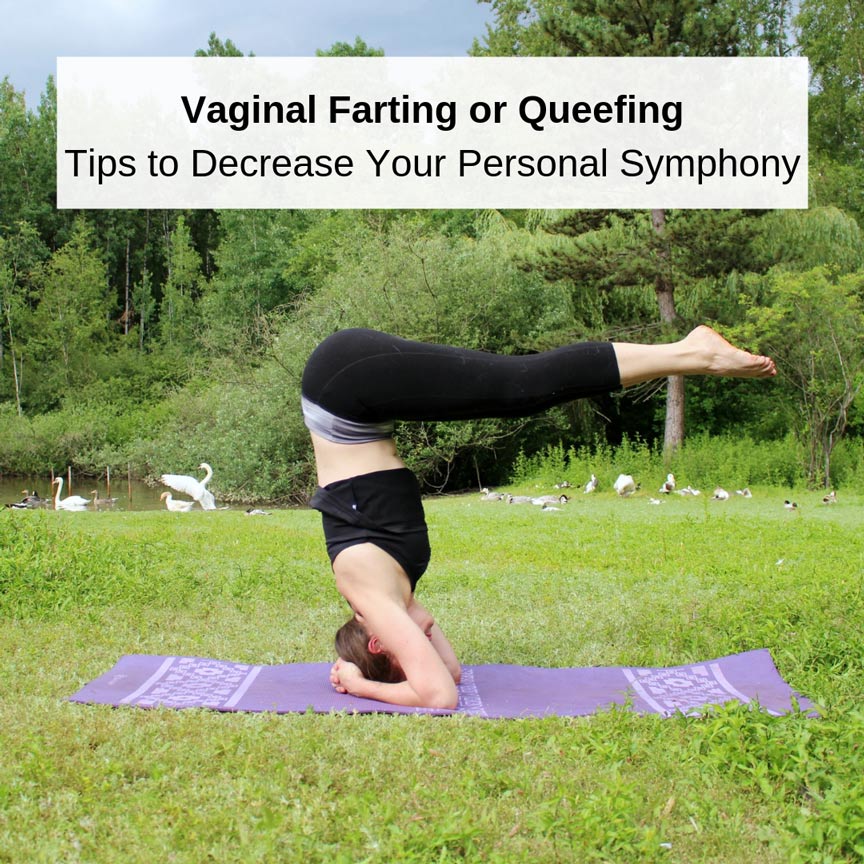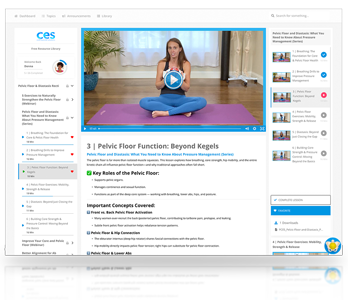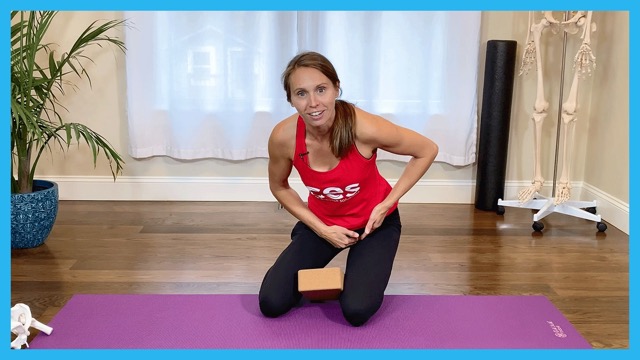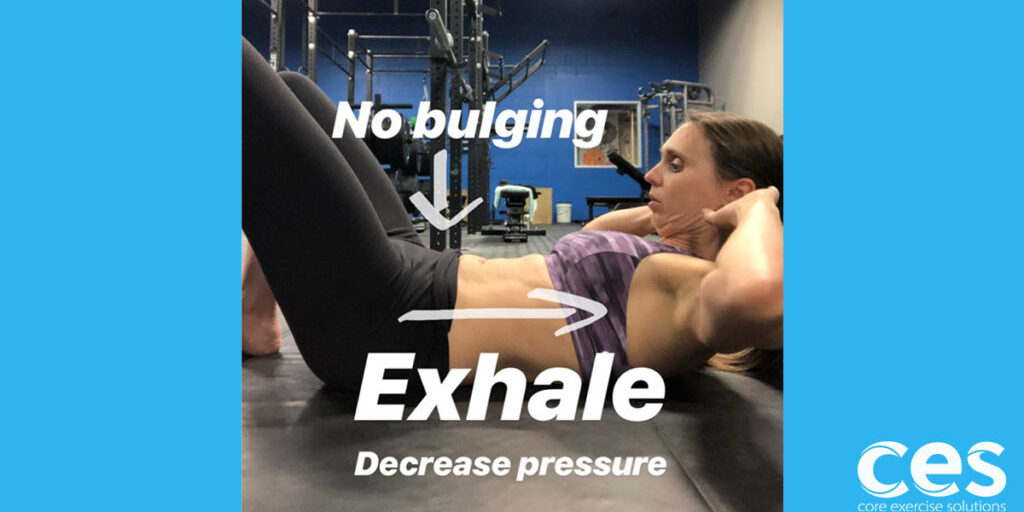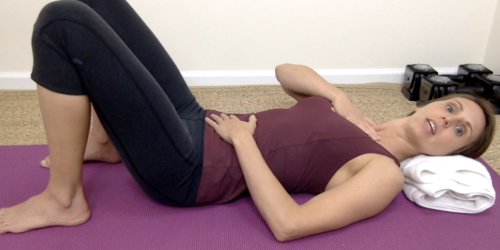If you have ever experienced vaginal flatulence or farting, you know it can turn anything into an embarrassing moment. Think about yoga, sex, getting up after an urogynaecological examination, or getting off the floor in an exercise class. Let's take a closer look at what causes it and what we can do to fix it.
What is vaginal flatulence?
Vaginal flatulence, also known as queefing, means that air penetrates the vagina and is simply released. There is no other way for the trapped air to come out than from the vagina itself. So just like an instrument, the vagina produces this sound. Even though it sounds like a fart it is not a fart and has no bad smell.
You are not alone! It can happen to anyone with a vagina, and it can happen at any age. This vaginal noise often happens during intimate moments. The vagina increases in size when the woman is aroused. This lets her vaginal room expand and creates a suction that allows more air to flow into the vagina. When the vagina contracts due to increased intraabdominal pressure, e.g. when changing positions, moving, or lack of arousal, there will be an expulsion of air which often can be heard. It can happen during sex if the penis, finger or a sex toy is introduced since this will narrow the vaginal opening even more. Just like when you whistle with your fingers in your mouth, the narrower the vaginal opening gets the more pressure is needed to release the air which then makes it more or less audible.
The pelvic floor plays a key role in this concert since the pelvic floor is able to narrow the vagina and the vaginal opening. We know that vaginal flatulence after giving birth is common and occurs more frequently after vaginal delivery. It also affects women after cesarean section, hysterectomy or pelvic floor repair.
What causes vaginal flatulence?
The main causes for increased vaginal noises are a weak or tight pelvic floor, prolapse, and retroverted uterus in combination with a weak pelvic floor. Since the pelvic floor reacts to our hormones, some women experience more queefing during ovulation or menstruation.
A tight pelvic floor can act like a suction to pull air into the vagina and then like a whistle for the trapped air to come out. Remember, a tight pelvic floor acts just like a weak pelvic floor because it often will not be able to relax nor contract properly.
A weak pelvic floor will allow more air to flow in and then release it with a fast and deeper sound when the intraabdominal pressure increases due to a lack of contraction control.
Click here for 5 exercises to naturally strengthen the pelvic floor.
How does a healthy pelvic floor decrease queefing?
A perfectly functioning pelvic floor will not allow much air to get sucked into the vagina during activities, such as yoga, because the vaginal room is nice and narrow due to a great resting tone.
A great working pelvic floor will move on the inhale and exhale, and therefore let any tiny amounts of trapped air out naturally and silently.
Think of inhaling and letting the pelvic floor sink down, getting soft and squishy. Think of exhaling and letting the pelvic floor follow the diaphragm on its way up back to its resting tone. A well-synchronized pelvic floor that is also well-tuned with the breathing system will react to intraabdominal pressure with increasing its tone. So when you think of getting off the table after the urogynecological examination (increase of intraabdominal pressure), which itself will have led to more air in the vaginal cavity (due to the examination finger, spectrum... in your vagina), aim for a fantastic inhale followed by a long and slow exhale allowing your pelvic floor to move up before you get up. The inhale will relax your pelvic floor and your vagina and give the air the possibility to pass easy and silently before the demand of movement occurs. On your exhale the pelvic floor muscle tone increases and closes your vagina — and you should be fine. No embarrassing vaginal noises anymore.
Vaginal farting during yoga
Have you ever experienced vaginal flatulence during your workout or yoga class?
Let's think about a position where your pelvis is higher than your shoulders: for example, the half-shoulder-stand or downward dog. When the pelvis gets higher and higher a tight pelvic floor can help to suck air into the vagina, and a weak pelvic floor will allow lots of air to flow into the vaginal cavity. When the pelvis comes down again and the trapped air wants to move out, a weak or tight pelvic floor will not be able to prevent the noise from happening.
Great tone and strength in your pelvic floor lets the vaginal room be narrow and will not allow tons of air to flow into the vagina, even after you’ve had kids. If you try to breathe throughout the exercise with the focus on great inhales and long exhales that touch your pelvic floor (if you are weak, try a gentle voluntary contraction of your pelvic floor on your exhale) you eventually will be able to get into the starting position without any noises.
Conditions that can make queefing worse
Prolapse
The position of our organs also plays a role in managing the vaginal sound. If the organs are well-placed, the risk of experiencing queefing is so much less than when we are dealing with prolapse or retroverted uterus. This condition allows the air to move more easily into the vagina which then will end with the air passing through the vaginal opening.
Constipation
Intermittent constipation can also cause queefing since the rectum and the vagina are very close neighbors. Having hard stool in the rectum can act just like the fingers/penis as described above and lead to a smaller vaginal opening. When the air gets trapped, you now know what will happen.
If the vaginal flatulence occurs frequently or at rest, and if it is associated with leaking urine or stool inside of your vagina, you want to see your gynecologist about it and get checked for a vaginal fistula.
How to stop queefing
Do you feel embarrassed when your vagina makes noises? Most of us do.
What can you do about the vaginal noise? You have different options. You could just carry on and try to enjoy your vaginal music. Or you can start to work on the cause that makes your vagina sound like the popping of a bottle of champagne.
Start by learning more about your pelvic floor and how it interacts with the rest of your pressure system such as your core, diaphragm, and glottis. Work specifically on your findings which could be on relaxation or strengthening of the pelvic floor, on the coordination of your breathing-pelvic floor system, and on your pressure management. Learn more about pressure management here.
You can see a pelvic floor PT in person to gauge the strength of your pelvic floor and determine muscle tightness. Find out more about your uterus position. If you have a retroverted uterus you may want to see a professional to help with the visceral work on your organs. This will help tremendously.
Make sure you have a soft stool consistency and a great bowel movement technique.
Enjoy your sex life and if the vaginal noise happens, consider it like the sound of a popping champagne. And smile:) Working on getting a well-balanced muscle and visceral system and pressure management will reduce this symptom and eventually clear it up. You can have a great impact on your vaginal music — it is your choice.
To start learning today, join us in our courses and programs for professionals where we dive deeper into understanding the pelvic floor and how to help all the lovely notes that it loves to play.
To see Annatina Schorno-Pitsch, PT at her clinic in-person in Switzerland, visit her website for more information: http://www.fitallegra.ch/
Free Pelvic Floor and Diastasis Recti Course
What You Need to Know About Pressure Management
🎥 6 Video Lessons | 🕓 97 Min | 📑 PDF Downloads
Working with pregnant and postpartum clients/patients?
This 6-part course offers key takeaways on breathing, pelvic floor strengthening and diastasis recovery. Sign up and start learning today!

